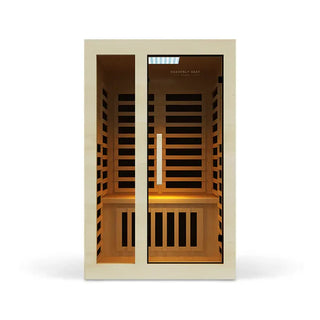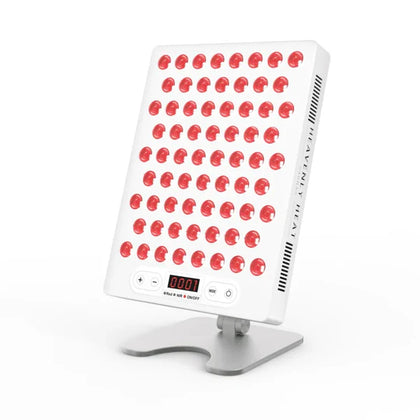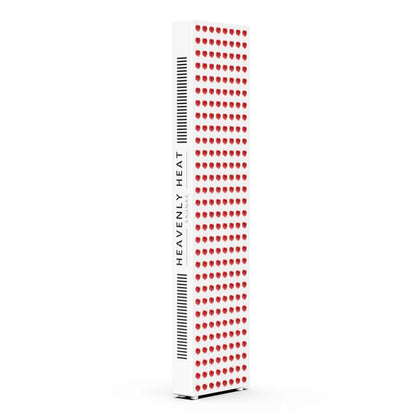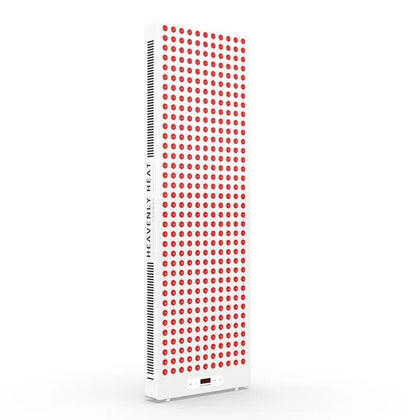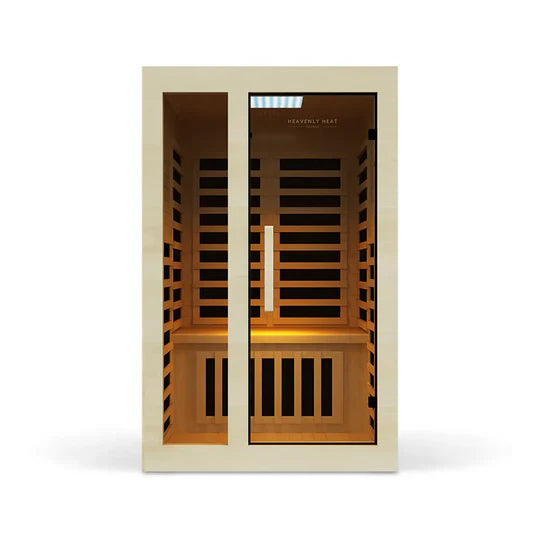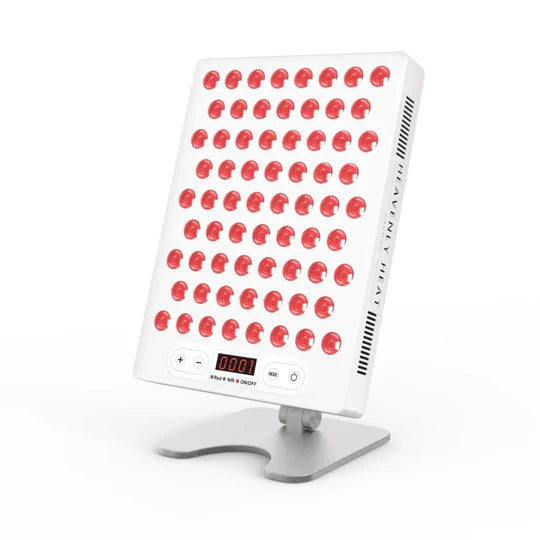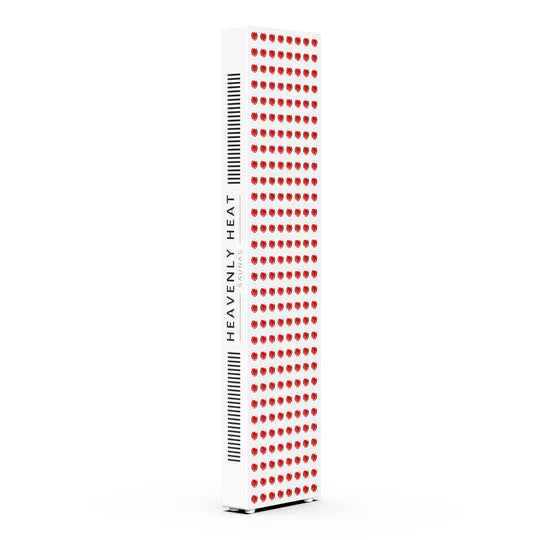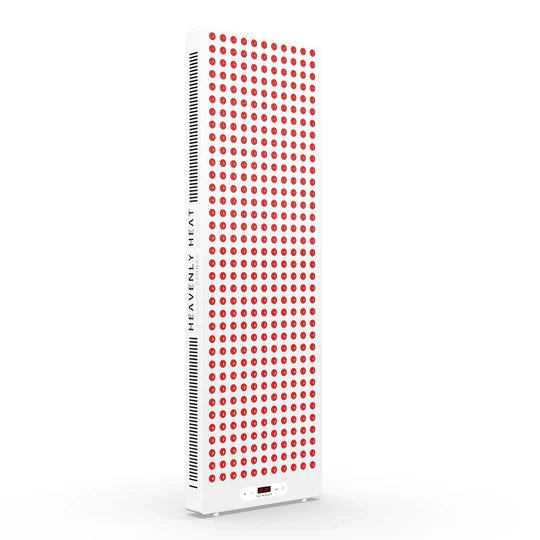Does at Home Red Light Therapy Work?
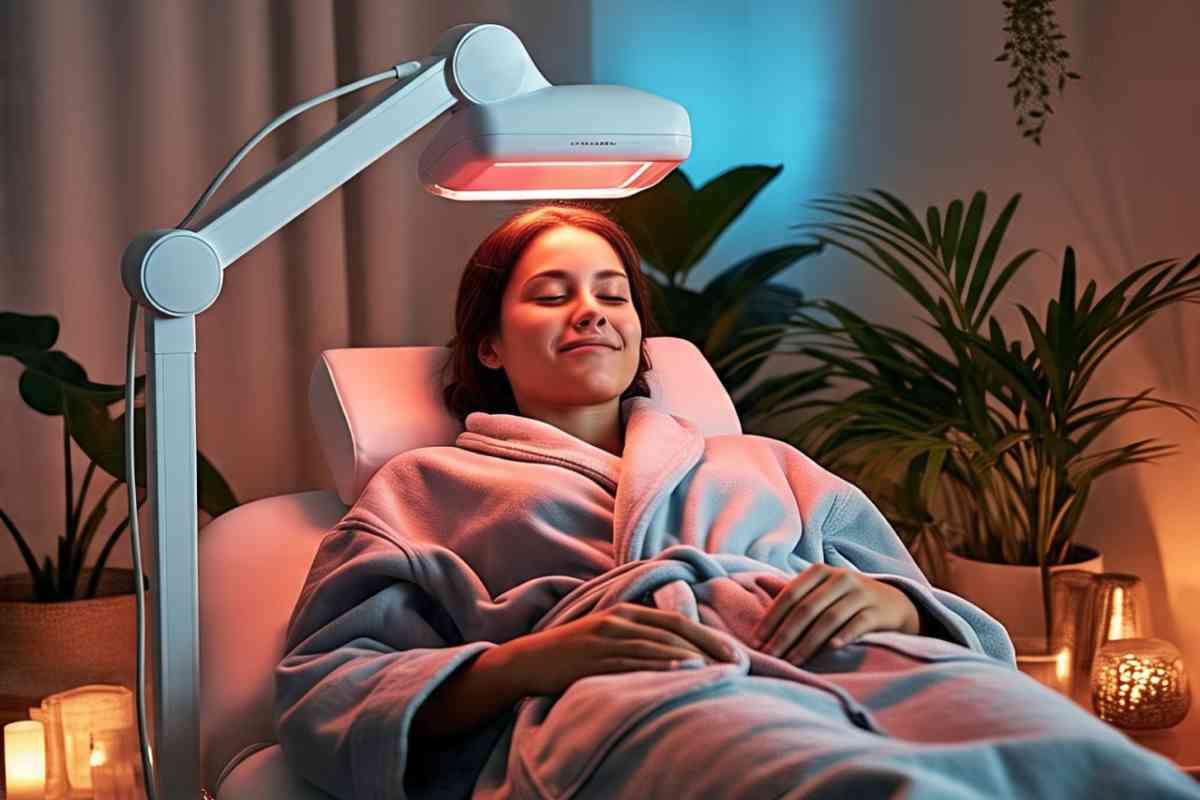
Curious if red light therapy at home actually works? You’re not alone. These devices promise better skin, less pain, and faster healing, all without leaving your house.
But do they really deliver? In this guide, we break down the real pros and cons, so you can decide if it's worth your time and money.
Key Takeaways
Enjoy Convenience at Home: Red light therapy devices are easy to use and fit into your daily routine.
Save Money Long-Term: One-time device purchases can replace costly clinic visits.
Know the Limits: At-home devices offer less power and may deliver slower or smaller-scale results.
Use Safely and Consistently: Follow usage guidelines to avoid side effects and get the best results.
Combine for Best Results: Pair at-home use with professional care for enhanced effectiveness.
Pros and Cons of Using At-Home red light therapy Devices
Pros of Using At-Home Red Light Therapy Devices:
Convenience and Flexibility
- Easy to Use with No Special Skills: Red light therapy devices are incredibly easy to use at home. You don’t need any special training, and most devices come with straightforward instructions. Whether you're lying down, sitting, or standing, you can comfortably use the device.
- Portable and Hands-Free for Multitasking: These devices are portable, so you can use them in any room without restrictions. Some models even offer hands-free options, allowing you to multitask while using them.
- Fits Into Your Schedule Anytime: The time of day doesn’t impact the effectiveness of your session, so you can easily incorporate it into your schedule. Whether it’s first thing in the morning or later in the afternoon, the therapy is flexible enough to fit around your daily activities.

Cost-Effective Over Time
- Save Money by Avoiding In-Clinic Treatments: At-home red light therapy can save you money in the long run. While the initial device cost might seem high, you can save hundreds of dollars annually by avoiding frequent in-clinic treatments.
- Quick Return on Investment: With a one-time purchase, the device often pays for itself within months. Compared to the ongoing cost of professional therapy, at-home devices offer excellent value.
- Minimal Cost-Per-Use: The cost-per-use of a home device is minimal, and you’ll quickly see that the investment is worth it.
Easy to Use
- Simple and Easy to Use: Using an at-home red light therapy device is simple and doesn’t require any special skills. The controls are easy to understand, making it accessible for anyone, even beginners or older adults.
- Quick Setup for Effortless Use: The setup process is fast and takes only a few minutes, so it’s easy to fit into your daily routine without any hassle.
- Effective Results with No Experience Needed: You don’t need any prior experience with red light therapy to see benefits. The device is designed to work for anyone, delivering effective results with minimal effort.
Non-Invasive Treatment
- Non-Invasive Treatment: Red light therapy doesn’t require surgery or injections. It uses light energy to improve skin health without any physical changes to the body.
- Safe, Pain-Free, and No Recovery Time: This therapy is pain-free and doesn’t involve any cuts or scars, making it a safer option with fewer risks. There’s no recovery time needed, so you can go about your day after treatment.
Improved Skin Health
- Red light helps your skin make more collagen: This light boosts your body’s natural collagen production,the stuff that keeps your skin firm, smooth, and youthful. More collagen means fewer fine lines and wrinkles over time.
- Your skin becomes smoother and more even: With regular use, red light therapy can improve the texture and tone of your skin. It helps fade uneven spots and gives your skin a balanced, healthy look.
- It keeps your skin more hydrated naturally: People using red light therapy often notice their skin holds in moisture better. This means less dryness and a more fresh, plump feel without needing extra creams.
Pain and Inflammation Relief
- Red light helps your body heal and eases the pain: Red light therapy supports your body’s natural healing process. It works well for easing chronic pain, muscle soreness, and even recovery after surgery by helping the body repair itself.
- Less swelling means less pain: This therapy improves blood flow and reduces swelling, which brings relief for painful conditions like joint aches, back pain, and sports injuries. Better circulation means quicker recovery.
- Regular use keeps the pain from coming back: Using red light therapy regularly can help stop pain from returning. It’s a smart, drug-free way to manage pain over the long term without side effects.
- More energy in your cells means faster healing: The light boosts how your cells work by powering up the mitochondria. This gives your body more energy to heal, lowers stress in the tissues, and reduces inflammation from the inside.

No Downtime
- You don’t need to stop your day to use it: Red light therapy at home fits into your schedule without making you pause your life. You can do it while watching TV, lying in bed, or even during a break,no need to change your routine.
- You can return to your routine right after the session: Unlike treatments that leave your skin red or sore, red light therapy is gentle. Once your session is done, you can get right back to work, errands, or anything else,your day keeps moving.
- You don’t need recovery time between sessions: Since there’s no harsh impact on your skin or body, you don’t need to “recover” between uses. It’s safe and simple enough to use regularly without it slowing you down.
Cons of Using At-Home Red Light Therapy Devices:
Limited Power and Coverage
- These devices don’t have the same strength as pro machines: At-home red light therapy tools usually come with much lower power than what you’d find in a clinic. Because of this, they might not reach deep enough into the skin or muscles to give strong results.
- You can only treat a small area at one time: Most of these devices are small, so you can only use them on one small spot at a time. If you’re dealing with a large area, like your back or legs, it takes a lot longer to get through the whole treatment.
- They work better for small problems, not serious pain: These devices can help with minor or local issues, but they’re not great for big problems like chronic pain or large injuries. You might not get the full results you're hoping for without stronger equipment.
Inconsistent Results
- Cheap devices give weaker results: Lower-quality red light therapy devices often don’t work as well, which makes it hard to get consistent results at home.
- Using the device the wrong way can mess up your results: If people don’t use the device properly, wrong angle, distance, or time, it can lead to poor or uneven results.
- Room temperature and air can change how the therapy works: Things like how hot or humid the room is can affect how well the light therapy works, adding to the inconsistency.
- Too many things can go wrong for steady results: Between the device quality, how people use it, and where they use it, getting the same good results every time becomes difficult.
Potential for Overuse or Misuse
- Overuse Can Cause Skin Irritation and Burns: Using red light therapy too much can irritate your skin and even cause burns. It’s important to stick to the recommended usage to avoid these issues.
- Excessive Use Can Lead to Swelling and Redness: Using the device too often can cause your skin to swell and turn red, which can be uncomfortable and may take time to heal.
- Overuse Can Worsen Pigmentation Issues: For those with melasma or similar conditions, the heat from the device can worsen dark spots and pigmentation, leading to more visible discoloration.
- Following Guidelines is Crucial for Safe Use: Overuse might seem tempting when results aren’t immediate, but it won’t speed up healing. Following the recommended guidelines is key to avoiding harm and seeing the best results, especially for sensitive skin.
Upfront Cost
The initial cost of at-home red light therapy devices can be high. Depending on the quality, some devices can run into hundreds of dollars.
While the upfront cost might seem steep, it may be worth the investment if you plan to use the device regularly.
A high-quality device may last longer, offering long-term benefits that make the initial price more justifiable.
Lack of Professional Supervision
Using red light therapy without professional supervision increases the risk of misuse.
Without proper guidance, you might apply the therapy incorrectly, which can reduce its effectiveness or cause side effects.
For example, you might overuse the device or target the wrong areas. A professional can guide you on how often to use the device and ensure it’s being used correctly to prevent unwanted results.
Requires Regular Use
Consistency is key when it comes to red light therapy. If you don’t use the device regularly, you might not see the desired results.
Skipping sessions can slow down progress or even prevent improvements altogether.
It’s essential to stick to a routine and avoid long breaks to maintain steady results.
Missing even a week of therapy can cause a setback, especially for issues like chronic pain.
Key Features to Look for in a red light therapy at home Device
Wavelength Range: Select the Right Light Spectrum for Effective Skin Penetration and Healing
- Effective Wavelengths for Skin Healing: The most effective wavelengths for skin healing fall between 600 nm to 1000 nm. For skin rejuvenation, 630 nm to 680 nm is commonly used, as it helps with the production of collagen, reducing fine lines and wrinkles.
- Wavelengths for Deeper Tissue Penetration and Pain Relief: For deeper tissue penetration and pain relief, wavelengths around 800 nm to 1000 nm are ideal. These wavelengths stimulate cellular repair, improve circulation, and reduce inflammation.
- Deep Penetration with Longer Wavelengths: Wavelengths like 660 nm, known for their deep penetration, are particularly effective for targeting skin concerns, enhancing blood flow, and promoting tissue healing. The longer the wavelength, the deeper it can reach, making it more effective for deeper layers of skin and blood circulation.
Power Output: Ensure Sufficient Energy for Fast and Effective Red Light Therapy Results
- Choose the Right Treatment Area for Targeted Healing: When selecting a red light therapy device, it’s important to consider the coverage size of the treatment area. A larger treatment area allows you to treat more skin at once, while a smaller area may be more effective for focusing on specific spots that need attention.
- Ensure Irradiance for Effective Skin Healing: Irradiance, measured in mW/cm², determines how much light energy is directed to a particular area of your skin. This measure helps compare the effectiveness of devices for delivering targeted healing, making it crucial for precise treatment.
Treatment Area: Choose the Right Coverage Size for Efficient and Targeted Healing
The treatment area size of your red light therapy device influences how long each session will take.
A larger treatment area can cover more skin, reducing the time needed for treatment.
However, a smaller area may allow more concentrated power, which can be beneficial for targeted skin issues like wrinkles or acne. When selecting a device, consider the size of the area you need to treat.
Portability & Design: Look for a Lightweight, Compact, and User-Friendly Device for Home Use
Portability and design matter when choosing a red light therapy device for home use.
A lightweight and compact device is easier to move around and store, allowing you to use it in different rooms or even while traveling.
A user-friendly design should include simple controls, a comfortable fit, and clear instructions for effective use.
Safety Features: Prioritize Built-in Safety to Protect Skin and Eyes During Therapy
- Eye Protection is a Must: Choose devices that include built-in goggles or automatic eye safety features to shield your eyes during sessions. These protect you from potential light damage, making them essential for safe at-home use.
- Auto Shut-Off Prevents Overuse: Devices with automatic shut-off features help prevent overheating and reduce the risk of extended exposure. This function ensures your session stays within safe time limits.
- Certified for Safety Standards: Look for red light therapy devices with CE or FDA certifications. The CE mark ensures compliance with European safety standards, while FDA approval confirms safety and effectiveness in the U.S. These stamps of approval mean the device has passed key health and safety checks.
- Cooling Features Keep You Comfortable: Red light therapy devices should have built-in cooling systems or heat management features. This prevents overheating and keeps your skin safe and your therapy sessions comfortable.
When to Use At-Home Red Light Therapy vs. See a Professional
When to Use At-Home Red Light Therapy:
For General Skin Care and Maintenance
- Clean skin helps the red light work better: Before starting your session, wash your face thoroughly and don’t apply any skincare products. If the skin has creams or oils, the light can’t go deep enough to help your skin properly.
- Strong skincare ingredients can cause irritation during therapy: Avoid using retinoids, AHAs, or BHAs before your session. These ingredients can make your skin more sensitive and may react badly with red light therapy.
- A few short sessions each week give better results than long ones: You don’t need to overdo it, just 10 to 15 minutes per session is enough. Doing this three to five times a week keeps your skin in great shape without causing stress or damage.
- Red light is a gentle way to keep your skin looking fresh: This therapy boosts collagen, smooths out skin texture, and helps fade dark spots over time. It’s a simple and non-harsh option for maintaining healthy, glowing skin

Minor Muscle Soreness or Pain Relief
If you're dealing with minor muscle soreness or everyday aches, at-home red light therapy can be a great option before turning to painkillers or appointments.
Studies show this kind of light therapy, called photobiomodulation, helps your body heal by boosting energy in your cells and calming inflammation.
One research review found it works well for common issues like back pain, knee pain, and even fibromyalgia.
Another study explained that it lowers pain by increasing blood flow, reducing swelling, and helping your cells recover faster. It’s safe, easy to use, and doesn’t come with the side effects of medication.
Convenience and Flexibility
At-home red light therapy is easy to fit into a busy day. You don’t need appointments or a trip to the spa, just turn on your device while you relax, watch TV, or even do your skincare routine.
Sessions are short, and the flexibility of using it on your own time makes it easier to stay consistent.
Lower-Risk Skin Conditions
If you’re dealing with mild skin issues like acne, cold sores, or dull skin, at-home red light therapy might actually help.
A review in Lasers in Surgery and Medicine looked at 31 clinical trials and found that LED therapy worked well for acne, herpes outbreaks, and even helped wounds heal faster.
Another study with 136 people showed real improvements in skin texture, smoothness, and collagen after using red or polychromatic light.
The best part? It was safe and had no major side effects. So for lower-risk skin conditions, red light therapy is worth trying at home.
When to See a Professional for Red Light Therapy:
Severe or Persistent Skin Conditions
Severe or persistent skin conditions like chronic acne, eczema, or psoriasis can be frustrating to manage with over-the-counter treatments.
Red light therapy is proven to reduce inflammatory flares in these specific skin conditions, which makes it a helpful option when other methods don’t seem to work.
If your condition worsens or doesn't improve after consistent treatment, it may be time to seek professional help.
In-depth Consultation for Medical or Chronic Conditions
If you have a chronic condition, like diabetes or arthritis, which involve inflammation and immune system dysfunction, it's wise to consult a doctor before starting red light therapy.
Certain medical conditions can affect how your body responds to light therapy.
Targeting Deeper Layers of Tissue
For deep tissue issues like joint pain or muscle inflammation, red light therapy can be highly effective, but targeting deeper layers often requires more advanced tools.
Professional-grade devices use higher power and longer wavelengths, and experts can adjust settings for better results.
Safety Concerns and Proper Guidance
Consulting a doctor before starting red light therapy is essential, particularly if you have any underlying health issues or are taking medication. A professional can help guide you on how to use the therapy safely.
When Treatment Needs to Be Tailored or Intensified
- Adjust the Intensity for Better Results: If you're not seeing the desired effects, a professional can increase the intensity to better address your specific concerns.
- Tailor Treatment for Your Skin Type and Health: Different skin types and health conditions may need adjustments to make sure the therapy works for you.
Can you combine At-Home red light therapy and Professional Care together?
- Combining At-Home and Professional Red Light Therapy Maximizes Benefits: Combining at-home red light therapy with professional treatments can be highly effective. At-home devices offer a convenient way to maintain results between professional sessions, especially when used regularly. Professional treatments tend to be stronger and provide more immediate results. Using both together maximizes the benefits for skin health, pain relief, and muscle recovery.
- It’s Safe to Combine At-Home and Professional Therapy: It’s completely safe to combine at-home therapy with professional care, as long as you follow guidelines and consult with your therapist. Many professionals even recommend home red light therapy to enhance their treatments.
- Listen to Your Body and Therapist for Best Results: You can combine the two treatments as often as needed, but always listen to your body and your therapist’s advice. At-home therapy helps maintain professional results, giving you continuous benefits even between appointments.
FAQs
How long does it take to see results from at-home red light therapy?
Red light therapy results vary, but you may notice changes in 1–2 weeks, with more noticeable improvements in 4–6 weeks. Pain relief can occur after a few sessions, while reduced inflammation may take 3–4 weeks. Consistent use is key.
Are results from at-home red light therapy permanent?
Red light therapy can improve skin tone and reduce wrinkles, but results fade without regular use, typically 2–3 times a week. For pain relief, effects last longer but still require consistent treatments to maintain benefits.
Can at-home red light therapy interfere with medications or medical conditions?
Red light therapy can support wellness, but caution is needed with certain conditions and medications. It may pose risks for those on blood thinners, with autoimmune disorders, or taking light-sensitive drugs. While generally safe with antidepressants, consult your doctor before starting.
Is at-home red light therapy effective for conditions beyond skin and pain relief?
At-home red light therapy may offer benefits beyond skin and pain relief, including improved mood, better sleep, reduced inflammation, and enhanced cellular function. It may support mental health, aid autoimmune healing, and boost overall well-being.




